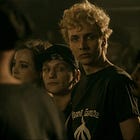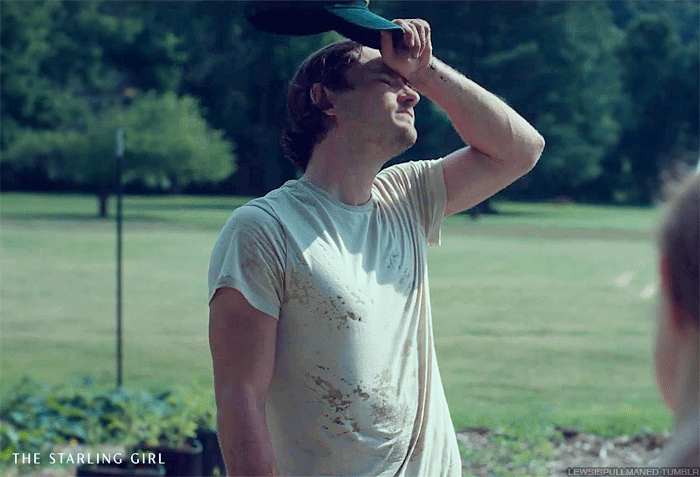Suggested soundtrack for this post…
This is a movie newsletter, after all, but here I am for the second post in a row talking about a tie-in with television. I guess enough of you nagging me that I don’t keep up with popular shows finally got to me! So I’ve started watching HBO’s The Last of Us ahead of its season two premiere on Sunday, although I’m not going to be caught up in time to watch. (I’ve made it to the much-hyped episode three, a reveal I am making now to see how closely one particular subscriber reads these.)
A horror movie is like a Rorschach blot of the world that produced it, so when any particular monster seems to resonate widely, it’s always worth pulling back the curtain to see what might be motivating those fears. It’s not particularly hard to see the origins of the real-life horror that produced The Last of Us since the show opens with a literal pandemic!
But these undead creatures have proved remarkably resilient and versatile over many decades, not to mention across the globe. To get a better sense of how the zombie can adapt, I’ve curated ten films featuring the monsters that span a wide range of time and culture. Be they classic or global zombie movies, may this list give you better eyes to see and deconstruct how this subgenre evolves and mutates as it passes between storytellers who dare to grapple with the decoupling of body and soul.
CLASSIC
1932, White Zombie, Amazon Prime Video
Maybe because it’s a rainy day in New York City, but I’d like to channel Hilary Duff for a moment: “Let’s go back / back to the beginning.” The zombie movie started with 1932’s White Zombie, an early talkie that feels its age. I’m not sure I would fully recommend this pre-Code oddity for anything other than an academic or intellectual excursion into the genre’s roots. It’s got a stellar, sinister performance from Bela Lugosi (most famous for his work in the vampire genre as the original Dracula) playing a voodoo master who helps a lustful plantation owner try to woo a woman betrothed to another man. The catch is that, of course, this means zombifying her. White Zombie establishes the supernatural roots of the genre but also roots in great fear of the “other” against a colonialist backdrop of Haitian labor exploitation and cultural dominance. In the film, these Black bodies are little more than ignoble savages to director Victor Halperin. But if you want to know what more revisionist takes on the genre were explicitly reacting against, it’s good to have a movie like this as background.
1962, Carnival of Souls, Max and the Criterion Channel
There’s some debate about whether Carnival of Souls is or isn’t a zombie movie, but director Herk Harvey’s only feature film certainly left its mark in the broader horror genre. As Mary Henry struggles to reintegrate with society following a car accident, she’s drawn toward the carnivalesque and mysterious fringes of town. Her dalliances with lurking figures of doom raise the spectre of who’s really dead: Mary or the lurking beings. Harvey builds a deeply unsettling sense of atmosphere that mounts throughout the film, suggesting a psychological parallel between zombie-like figures and humans. What does it mean to be (un)dead if you’re not really living, after all?
1968, Night of the Living Dead, Max, Peacock, and the Criterion Channel
Jordan Peele would probably be the first to tell you: there’s no Get Out without George A. Romero’s Night of the Living Dead. This Civil Rights-era zombie tale took the then-unusual step of casting a Black actor in the leading role, forcing an audience to see and understand danger through his eyes. His character, Ben, leads a group of strangers holed up in a rural Pennsylvania farmhouse to fight back against a group of re-animated corpses who attack them. These invasive species, as conjured by Romero, are not just a negation of life but a corruption of its essence as they feast on human flesh. Their consumptive rage hints at a larger threat that subsumed mid-century America and poses a much clearer and more present danger than initially meets the eye.
1975, Shivers, free for all on The Roku Channel (also available to rent from various digital platforms)
Of course, the reigning master of body horror, David Cronenberg, started his career in earnest with a zombie movie. Fifty years ago, Shivers captured a terrifying version of parasites taking over a chic new apartment building and turning its residents into zombified nymphomaniacs. The setting of an island high-rise, unnatural in its imposition into the natural world, sets the tone early. Cronenberg uses his half-alive and barely sentient characters to represent how a fetishization of convenience and commodities corrupts the soul. No matter the mortification that the body undergoes in the director’s work, even through to his upcoming release The Shrouds, this central conflict remains.
1987, Prince of Darkness, available to rent from various digital platforms
For all the associations that zombie movies have with the occult and magic, John Carpenter makes the creatures all the more frightening by situating them within the familiar. This 1987 film from the director of Halloween and The Thing suggests it’s not the devil you don’t know that you should be afraid — it’s the one you do. A group of scientists and researchers determine that the slow-moving bodies in Prince of Darkness are just embodiments of the Devil as warned by Christianity. It’s not so easy to cast them away as aberrations when knowing their associations with something so familiar to many Western viewers. This tension dovetails thematically with Carpenter’s escape narrative in the back of the film, given that the logically-minded researchers must flee the clutches of this dark force that taunts them in unexpected ways.
And while you’re at it, why not look at lists featuring some scares of a wider variety?
GLOBAL
🇳🇴 Handling the Undead, Hulu
Movies often characterize zombies as an embodiment of a vivified threat of the “other.” But as these much-feared figures highlight the thin line between death and life, they present an opportunity for a much deeper reckoning with our mortality. That’s the opportunity given to us by Norwegian filmmaker Thea Hvistendahl in her quiet stunner Handling the Undead, which wowed a viewing party in my apartment during Sundance this year. This restrained take on the zombie movie crafts masterful tension and terror out of zombies who are not strangers … but close relatives and friends of those still alive. The film presents a provocative scenario where the living do not want to vanquish the undead but rather find some way to coexist with these savage vestiges of their departed loved ones. While this might start like a domestic drama, I can assure you not to be fooled — it does get into midnight movie territory by the end.
🇯🇵 One Cut of the Dead, Shudder and available to rent from various digital platforms
I didn’t know I needed a Noises Off for zombie movies, but that’s the joy of One Cut of the Dead. This twist on the zombie comedy presents an unexpected twist on the genre as it details a grisly zombie attack on the set of a film about zombies. In Shin'ichirō Ueda’s ironic take on the movie-within-a-movie subgenre, it’s not the actual zombies who are the mindless fools lumbering around abandoned haunts. Instead, it’s the movie crew so dead-set on capturing a virtuosic single-take shot that they completely miss the calamitous occurrences taking place around them. The film also takes many unexpected and surprising turns throughout its runtime, which ensures you’re on your toes far more than the characters.
🇪🇸 [REC], Tubi (free with ads)
Found-footage-style movies are a subgenre that always gets under my skin because they so often cheat the rules of their existence. (If the camera does not have a reason to roll, why should we see anything?) But Spanish zombie flick [REC] manages to make the format work as it documents a TV ashoot gone awry. Host and reporter Ángela Vidal and her cameraman start by following a firefighting team on what seems like a routine call, but they end up stumbling upon a much bigger story than they could have imagined. If sunlight is the best disinfectant, the democratization of handheld camera access certainly helps capture hidden areas of society that people would rather ignore or forget. The zombies they observe are the shut-ins left to fester, which then allows their condition to foment and spread to anyone they bite in the spasms of their rabidity. But the real action comes when the government arrives to make their mark on the scene … and the reporting team’s camera starts poking around at a potential cover-up.
🇰🇷 Train to Busan, Amazon Prime Video
The Korean cult sensation Train to Busan is less about the zombies and more about what they inspire in the humans left to outwit them. The creatures here are the product of a biotech bonanza gone wrong and a government that did not look out for its citizens enough to protect them from industry gone awry. Instead, it’s the train passengers — including a baseball team, two elderly friends, and a father/daughter duo — who learn that the only way to beat back the zombies that overtake their transportation is by banding together. With individualism encroaching in the form of monsters willing to do whatever it takes to get their next feed, they find power in community and collectivism.
🇫🇷 Zombi Child, Amazon Prime Video and MUBI
Bertrand Bonello (most recently seen in theaters with last year’s The Beast) is the perfect way to close out this list because his 2019 film Zombi Child calls BS on the whole genre. This revisionist monster movie would make for a great double bill with White Zombie, actually, given their shared interest in the setting of Haiti and its voodoo culture. But rather than using the island’s indigenous religious practices as a way to other them, Bonello deconstructs the colonialist lens of the gawking zombie film. The teenage granddaughter of an undead man living in contemporary France quickly learns the value of her relationship to the porous boundary between life and death. That realization comes courtesy of a white peer, who sees that talent as something whose only value lies in its potential for commoditization. Zombi Child grows ever more provocative and mysterious as Bonello suggests the possibility that nothing can ever really stay dead … or undead, for that matter.
My streaming guides for Decider all got a nice refresh for Q2. Friendly reminder: these are good to bookmark when you have very targeted streaming recommendation needs.
Back at Tribeca last year, I reviewed a charming but largely forgettable comedy called Sacramento for The Playlist. It was one of the few things I covered out of the festival because it stars Michael Angarano, Michael Cera, and about two minutes of Kristen Stewart. It’d be a nice streaming watch later down the line, but don’t rush out to see it in theaters when it opens this weekend.
You can keep track of all the freelance writing I’ve done this year through this list on Letterboxd.
You can always keep up with my film-watching in real-time on the app Letterboxd. I’ve also compiled every movie I’ve ever recommended through this newsletter via a list on the platform as well.
Two very different groups of people, one very complicated picture of where the film industry sits.
As an inveterate movie theater shusher, I am all for this NYT (gift article) letter of recommendation: “The Case for Telling Total Strangers to Shut Up.”
Something special is coming for paid subscribers this weekend with some unused interview material.
Yours in service and cinema,
Marshall
















